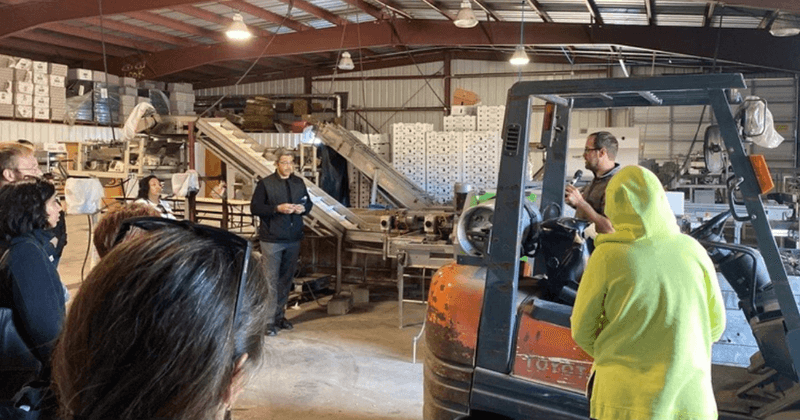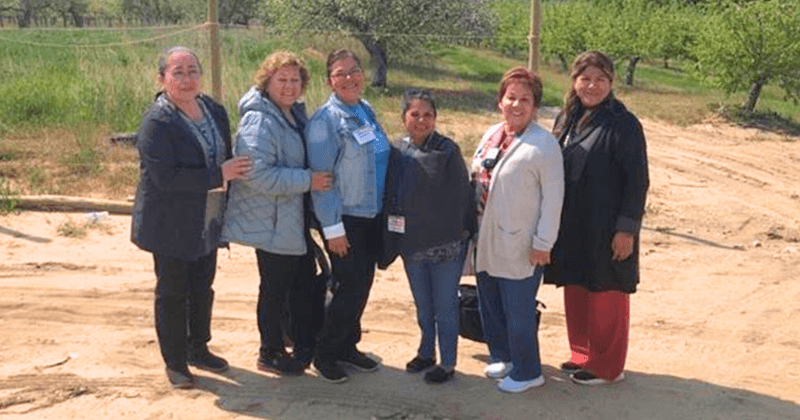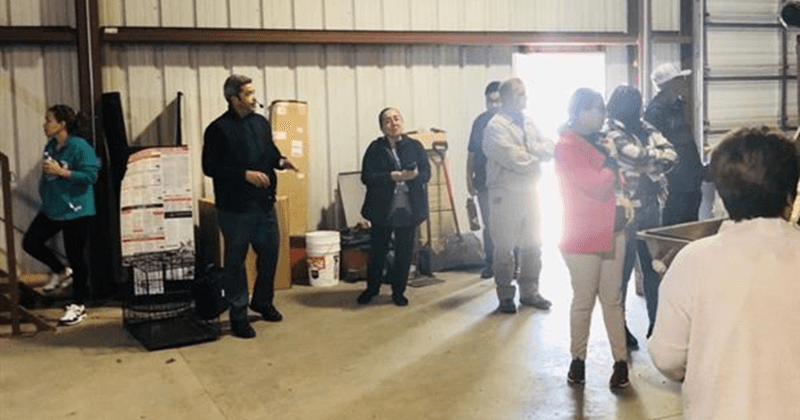Farmworkers Push for Community-Led Pesticide Exposure Surveillance Tool, Understanding of Farmworker Needs at PACT Event

At Wunsch Farms, a sixth-generation family farm in Traverse City, Michigan, cardboard fruit packing boxes and a forklift in a large clean warehouse show the readiness of the farm as cherry season gets under way. On a recent warm day, the warehouse welcomed farmworkers, pesticide safety professionals, and farmworker advocates from around the country, joined by Migrant Clinicians Network’s Alma Galván, Renée AboAmshe, Nicole Torres, and Amy Liebman, to learn about the farm’s Integrated Pest Management approach to minimize spraying -- and the H-2A workers who live on-site that make it happen.
The field trip to the cherry and apple orchards was just one part of the Pesticide Applicator Certification and Training (PACT) annual meetings, funded by the Environmental Protection Agency, which provide State Lead Agencies and Pesticide Safety Education Programs staff with opportunities to learn more about pesticide applicator certification and training, and implementation of farmworker protections like the Worker Protection Standard. At this year’s PACT meeting, Migrant Clinicians Network hosted 11 farmworkers and farmworker allies from across the US – part of the Farmworker Collaboration Group -- to bring important diverse perspectives to the table, and give our participants the opportunity to network and learn alongside their pesticide safety counterparts.

MCN's Alma Galvan (left) connecting with other organizations at the PACT event.
Elvira Carvajal, National Organizer for Alianza Nacional de Campesinas, was one attendee. She worked for years in fields and nurseries, where she suffered a miscarriage as a result of pesticide exposures in nurseries while pregnant. She appreciated the PACT meeting because “it’s important to learn from each other, create a community, and have a better understanding [about pesticide safety] in order to inform our community.” The meeting “helped me to have hope that the changes that we’re advocating for could be achieved, since EPA representatives participated in the meetings,” Carvajal added.
During the meeting, the Farmworker Collaboration Group unveiled the draft of a community-based pesticide exposure surveillance tool. “We’re testing the tool now,” said Galván, who presented the tool at PACT. Unlike other surveillance tools, this one is entirely in the hands of the local community, bypassing formal requirements to make an official report and where many farmworkers fear repercussions of reporting their exposures. The data from the tool would reside locally, rather than with a department or agency that may make it difficult for community members to access. “Who will own the information? It’s the community – which is very important,” Galván said. While the data will not be confirmed by a health provider, it will place a finger on the pulse of exposures, which can prompt community leaders and local agencies to take notice and act. “It will be a proxy indicator of what’s going on in the community, and will give the community the power to say, here in our location, this many exposures happened,” added Galván. Such community-based tools are already in use in Latin America for other health concerns like violence against women.

Additionally, three members of the Caribbean Collaboration Group participated in PACT. Farms in Puerto Rico and the US Virgin Islands are also regulated by the EPA. While some issues that Caribbean farmers experience are unique compared to mainland farmers, other barriers are the same. For example, monolingual pesticide labels are challenging to follow when Puerto Rican farmers and farmworkers do not speak or read English; this is the case for many farmworkers and some farmers on the mainland as well. “The participants did a lot of networking with people, and found resources that they can adapt for farms in Puerto Rico,” both culturally and linguistically, said Torres, who herself came from Puerto Rico to attend the event. “It was great,” Galván said, wrapping up the event. “I think the participants of the conference realized a little more what it is to be working in the field.”
- Log in to post comments